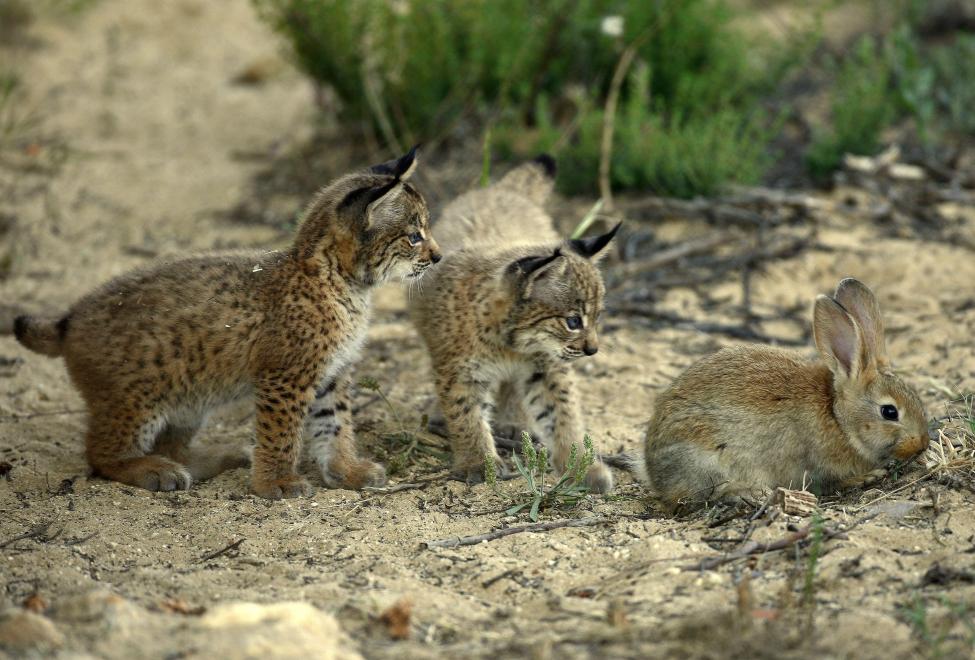Despite the fact the Iberian lynx population increased tenfold in two decades, the animals still live under threat of extinction. Collisions are the leading cause of death for lynx in Spain.
This also applies to two baby lynxes found dead on August 28 on the road connecting Vilches and Linares in the province of Jaén. The Guardia Civil of Jaén and the Andalusian Ministry of Agriculture confirmed the preliminary cause of death. The road, one lane in each direction and with narrow shoulders, crosses one of the areas of the province of Jaén where this protected species is relatively common.
Last Thursday, 112 received a call to warn of the dead lynx cubs on the road. The emergency centre immediately called the Centre for Rehabilitation of Endangered Species (CREA), the local police and the Guardia Civil, who were able to confirm the death of the two animals.
Accidental death of cubs
According to the Guardia Civil of Jaén spokesperson, everything points to a random accident; in principle there is no criminal offense. A poisoned animal or an animal in a trap would warrant investigation.
The two dead animals will undergo an autopsy to confirm the cause of death. “If the autopsy shows they have been poisoned, an investigation will be launched,” the spokesperson said. The fine for intentionally killing a lynx ranges from €4,200 in Madrid to €60,000 in Andalucia and €90,000 in Extremadura and Castilla-La Mancha.
The Junta de Andalucía will work with the Diputación de Jaén – which has road authority – to put up warning signs in certain areas, trying to reduce the risk of collisions with the animals.
“It is important to urge drivers not to exceed the speed limit on these roads, as this would greatly reduce the risk,” said a spokesman for the Andalucian Ministry of Agriculture.
A critical situation
In 2002, the situation of the Iberian lynx was critical, with only 94 specimens in Andalucia. The captive breeding programs and the creation of different habitats resulted in a ten-fold growth of the small population. Last year, the species surpassed the 1,000 mark in Spain and Portugal, reaching 1,111 individuals between adults and cubs. Growth was 30% over the previous year: 414 offspring of 239 reproductive females were born. This according to data from the Ministry for the Ecological Transition and the Demographic Challenge.
The population of the Iberian lynx in Andalucia has reached a record number of specimens in 2020. The 2020 census shows a 10.7% growth to 506 individuals. The animals live over an area of more than 1,600 square kilometres. This represents an increase of 49 lynx from the 2019 figures.
Miguel Ángel Simón, the main promoter of the lynx’s reintroduction program, estimates numbers could reach 700 individuals in the region. Guarrizas (Jaén) and Guadalmellato (Córdoba) are the two main areas where lynx have returned thanks to the 2019 reintroduction program.
The situation leads to optimism, but with caution. The lynx, which experienced its most critical moment in 2015, is still classified as an endangered species in the Spanish catalogue of endangered species. The vast majority of lynx (87.5%) are in the southwestern quadrant of the peninsula, especially in the five cores of Andalucia. Half the Spanish lynx population live there. Then follows Castilla-La Mancha with a third of the population and Extremadura with 141 specimens.
Threats
Threats to this species remain low genetic diversity, prey availability and unnatural deaths – mainly due to collisions. Simón attributes last week’s dead kittens to the impact of local roads, “much more dangerous than the highways for lynxes.” It is rare for lynx to be killed intentionally. Although last February, an Iberian lynx was shot dead in a stream near Doñana National Park.


